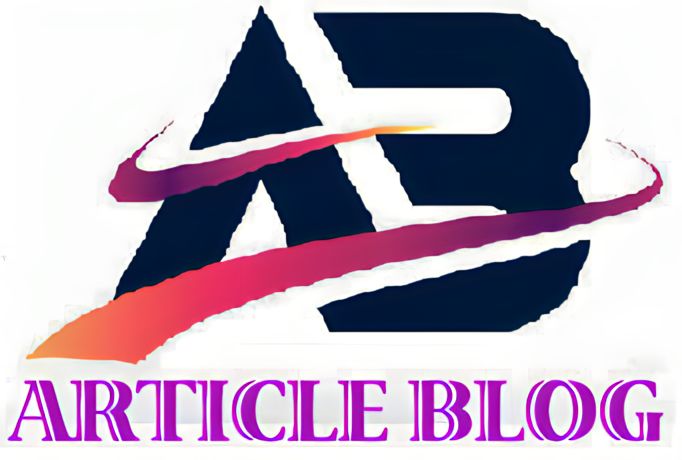Alternatives to the GOAT: When it comes to great streetwear or modern-day outfits, having the right pair of shoes to match your style and feel is essential. Where can I get these sneakers? The answer is the GOAT shoes. While GOAT serves as a perfect shoe marketplace for many sneaker enthusiasts, other companies like GOAT may be of interest to you.
About GOAT
GOAT is a well-known online portal that offers clients luxury clothes and accessories, with a concentration on high-quality sneakers. GOAT reaches out to clients through primary and secondary markets. The brand has 30 million followers and 600,000 retailers in 170 countries.
GOAT promises to be the destination for the best footwear and gear from the past, present, and future. You may look for newly released sneaker gear or accessories, or if you have a limited budget, the site can bring you used products at a fair price.
GOAT simulator does not have any flaws in terms of stability or honesty, but — as with anything, there are pros and cons — you may not like the possibilities it provides or they may be unsuitable for you. In this case, we’ve compiled a list of GOAT alternatives for you in the article below.
Top 15 Best GOAT Alternatives for Buying & Selling In 2023:
1. The Kalahari Red
Kalahari Red goats are descended from two lines: one of red-headed Boer goats and another of South Africa’s indigenous unimproved goats. The Kalahari goat farmer asserts that this breed is more robust than Boer goats.
The red coloration of Kalahari goats is distinctive to this breed. They have pigmentation throughout their bodies. The rich horny goat weed red coat and large ears give excellent heat resistance. Every eight months, these goats can give birth.
2. The Spanish Goats
The Spanish meat goat is also known as the “brush” goat because it was commonly employed to manage the brush. These goats originated in Spain and are now found all over the world. Murciana-Granadina, Palmera, Malagliena, Majorejera, Tinerfena, and Guadarrama are six breeds of Spanish goats. Before the Boers, this breed was the most sought-after meat goat breed, and it is still in demand among breeders worldwide to boost meat output and fertility.
Spanish goats come in a variety of hues and might have short or long hair. They have swirling horns and non-pendulous ears. The goats are resilient and versatile. Some of the goat meaning could have been polled. Because naturally polled goats possess a gene for hermaphrodism, breeders urge only horned goats.
3. Kiko
Kikos are a New Zealand breed. They have big bodies and make great mums. The children are rapidly growing and adaptable. While goats have a smaller body weight than Boers or Kalahari, they generate a large amount of meat.
Because these goats require less additional food, breeders all over the world are becoming increasingly interested in Kikos and Kiko-Boer (composite breed) for meat production. A Kiko’s face is straight, with huge twisted horns and non-pendulous ears. The physique is muscular and compact.
4. Angora
Angora goats are generally kept for their fiber, although they also provide high-quality meat and milk. Because of the skinning required to obtain meat from these goats, most meat markets do not consider Angora goats to be appropriate for meat production. The skin accounts for 10-15% of the carcass’s weight, and the price given for goat meat is based on weight per kilogram, resulting in a significant loss for the producer.
The goat simulator 3 originally came from Ankara (formerly known as Angora). They were chosen because of their dense white fleece that covers the body from head to tail and down the legs to the knees or even lower.
The head is powerful and straight, with medium-sized pendulous ears. The neck appears to be medium in size and fits neatly into the shoulders. Angora goats have a high ability to survive in the wild. However, they may not be as adaptable to cold conditions as most other meat breeds.
5. Savanna
Local South African goats created the white Savannah goat, commonly known as the white Boer. The high price of these goats is due to their white coloration. Along with the Boer and Kalahari, the Savannah is the most popular meat breed in Africa and the rest of the globe.
The Savannah has black skin, short white hair, horns, a nose, and an udder. To keep warm throughout the winter, the goats grow an additional fluffy coat. Their heads are long and curved, with large ears. The physique is muscular and modest in breadth. The shoulders of the bucks feature folds of loose skin.
6. Tennessee Woodenleg
These are sometimes referred to as Tennessee Fainting goats or Stiff-Legged goats. The goats are myotonic, which means that when they are scared, their muscles stiffen and they fall. The Tennessee Woodenleg goat breed is one of the few that originated in the United States. Goats are generally raised for meat, although they are also maintained for milk and are a popular pet breed. They have large, muscled bodies and short-medium coats. The profile of the face is straight, with non-pendulous ears.
7. Boer
The greatest meat goat breed is the Boer. Boer goats were initially created in South Africa’s Eastern Cape area. Boer goats were created by crossing indigenous African goats with imported Nubian and Indian goats.
These goats are tough and adapt well to their surroundings. Furthermore, they have a high resistance to illnesses that are frequent in other goat breeds. Boer goat meat is of the highest quality. This is why they are gaining appeal among goat meat producers all over the world. They might be pricey, but they are well worth it for what they can provide.
Boer goats are distinguished by their huge, muscular white bodies, reddish, and blaze. It has long legs, short, silky hair, and long ears. The head is powerful and features horns with a progressive backward curvature. The briskets of Boer goats are plump and the ribs are well-sprung. The back is wide, and the legs are strong. Boer goats can conceive once every seven to eight months.
8. Australian Rangeland Goats
The Australian rangeland goats are sometimes known as feral goats or wild goats. The breed is highly popular in Australia and is transported as meat and live animals all over the world.
These wild goats are descended from Angora and Cashmere stock. These are extremely tough goats that have evolved through time via natural selection and are well-adapted to severe settings. They have adapted so well that they are now a significant supplier of goat meat throughout the world.
9. Black Bengal
The Bengal goat is a hard-bodied, petite dwarf milk and meat goat. In Bangladesh and northeast India, the breed is popular for meat. The goats have black coat with short hair, however brown, white, and grey coats are also found in the breed. It has short ears and a beard.
A mature buck weighs 40-44 pounds on average, whereas an adult doe weighs 35-40 pounds. Both sexes have horns that are 5-6 inches long. Although their average weight is lower than that of most other meat breeds, the meat quality and kidding capacity more than compensate. In two years, the goat has three children.
10. Sudanese Male Desert Goats
Sudanese male desert goats are an important meat goat breed in Sudan. The goats are located in northern Sudan’s semi-desert terrain. They are utilized to produce both meat and milk. The flesh of these goats is said to be more delicate and juicy than that of many domestic varieties available in the area.
11. Jabel Akhdar
Oman’s goat breed is the Jabal Akhdar. It accounts for around 20% of Oman’s overall goat population. In terms of growth rate, body weight, and carcass weight, the goat outperforms other breeds in the country. Most Middle Eastern nations sell Jabal Khaddar beef.
The goat has golden-brown hair that is silky and medium-length. Most goats have medium-length back twisted horns, however, others may be hornless. Jabal Akhdar goats stand 115 cm tall on average. These goats have the biggest average body size of any goat breed in the country.
12. Saanen Goats
The Saanen goat breed is undoubtedly the greatest for milk, but milk is not the only thing the Saanens produce. This breed’s meat is also quite popular, especially in areas where the population is dense.
13. Beetal
Beetal goats are a popular tropical breed that may be found in India, Bangladesh, and Pakistan. Punjab is home to purebred goats. The goats have a shiny short coat and a convex face. Ears are long, curled, and droopy.
14. Damascus
The Damascus goat, often known as “the Aleppo,” is a Syrian native breed. It is a Nubian-related breed produced for milk and meat. Damascus is regarded as one of the Middle East’s greatest dual-purpose breeds. The goats have a reddish-brown coat of long hair and a twisted horn, which is found in both sexes.
15. Anglo-Nubian
In the 1870s, the Nubian breed was created in England by breeding British goats with African and Indian guys to create a composite breed. It is a dual-purpose breed used for both meat and milk, albeit milk is far more famous than meat.
Conclusion:
The list of companies given in the preceding article is an excellent choice if you are looking for the best sneakers or other footwear for yourself. They are well-known companies with millions of clients and supporters from all around the world. If you do not like what they have to offer, you may switch to another brand because there are plenty of fish in the water.

















